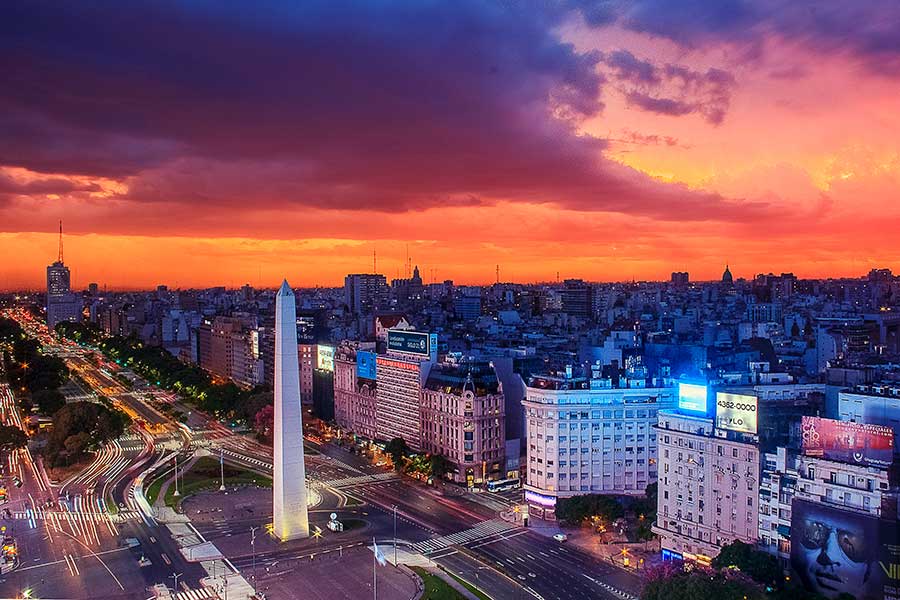The City of Many Passions encourages North American travelers to escape the cold and experience summer in the Argentine capital
Buenos Aires, Argentina – January 16, 2020 – Buenos Aires welcomes families, solo travelers and friends to fall in love with the Argentine Capital this winter (southern hemisphere summer), offering warm weather and an array of cultural offerings. During this time many of the porteños, or locals, have left for vacation, giving the destination a quieter and more relaxed feel. The Buenos Aires Tourism Board recommends travelers to visit in January and February, when traffic and public transportation isn’t too congested.
Below are a several of the city’s most attractive offerings:
Buenos Aires Playa – Latin America’s first urban beach, Buenos Aires Playa, is the perfect spot for tourists and residents alike. From lounge chairs to beach volleyball courts and dance classes, Buenos Aires Playa will be open until March 1, every Tuesday to Sunday, 10 a.m. to 8 p.m. Concerts and entertainment shows will take place for both adults and children to enjoy every Friday to Sunday. For a full schedule of free activities, click here.
Porteño Carnival – The Buenos Aires Carnival is a free and popular celebration ready to take center stage this year. Influenced by European, African and native Argentine culture, the spectacles of dance, drumming and musical street festivals are fueled by murgas, bands of marching percussionists and dancers decked out in satins and sequins. More than 100 murgas take place across different neighborhoods in February, brightening the city’s spirit through their music and energy.
Enjoying the city’s parks: Buenos Aires is a nature-friendly urban destination with over 100 green public spaces, ideal for exploring on foot or bicycle. Some of these can’t miss spots include:
- Carlos Thays Botanical Garden – Named after French architect and landscaper Carlos Thays, this green space is home to over 6,000 species of plants and trees, both native to Argentina and from other regions. Children can enjoy botanical expeditions and learn more about these species at the Children’s Nature Library.
- Buenos Aires Eco-Park – An ideal spot for taking a stroll with the family, this interactive eco-park offers free educational and recreational activities such as learning about birds, renewable energy and meeting veterinarians.
- Ecological Reserve – For visitor’s looking to enjoy a nature walk, take a bike stroll or go on an urban hike, the Reserva Ecologica is the perfect go-to spot. An 865-acre natural reserve of land abutting the Puerto Madero neighborhood, surrounded by the waters of the Rio de la Plata river, the park is accessed from the Costanera Sur walkway and is the perfect example of nature’s resilience.
- Parque Tres de Febrero – A popular spot among locals and tourists, Parque Tres de Febrero is home to a beautiful lake and the Rosedal de Palermo, a garden with more than 18,000 roses.
After a long day of exploring, visitors can wind down at some of the city’s best rooftops, while enjoying a cocktail and admiring Buenos Aires’ unique scenery.
- Trade Skybar – Created by the same owners as Nicky Harrison and Uptown, Trade Skybar opened in June in the heart of the Buenos Aires’ theatre district along Corrientes, atop one of the city’s most important modernist skyscrapers. The drinks are spectacular and views even better, allowing visitors to see miles away across the Rio de la Plata to neighboring Uruguay.
- Crystal Bar – Located on the 32nd floor of the Alvear Icon hotel in Puerto Madero, Crystal Bar offers one of a kind views of the city and Río de la Plata, not to mention signature drinks fused with tonics and vermouths.
For more information, visit travel.buenosaires.gob.ar.
About the Autonomous City of Buenos Aires
Argentina’s capital and most populous city, Buenos Aires, is located on the western shore of the Río de la Plata estuary, on South America’s southeastern coast. The city is neither part of Buenos Aires Province nor the provincial capital; rather, it is an autonomous district. Buenos Aires is a top tourist destination that offers a unique blend of European elegance and Latin American passion. Famous as the birthplace of tango, the city is also home to world-class opera, theater and art, well-preserved European-style architecture, native traditions, and to restaurants that overflow with wines from Mendoza province and cuts of beef fresh from the Pampas. Ranked by The Economist as 2017’s best Latin American city to live in, Buenos Aires is made up of small, highly individualized neighborhoods, each with its own characteristic colors and forms. The destination attracts and satisfies vacationers of all tastes and budgets with its wide range of accommodations including luxury hotels, chic boutique hotels, and international brands. For more information on tourism, visit: travel.buenosaires.gob.ar or follow Buenos Aires’ Facebook page or Instagram.



